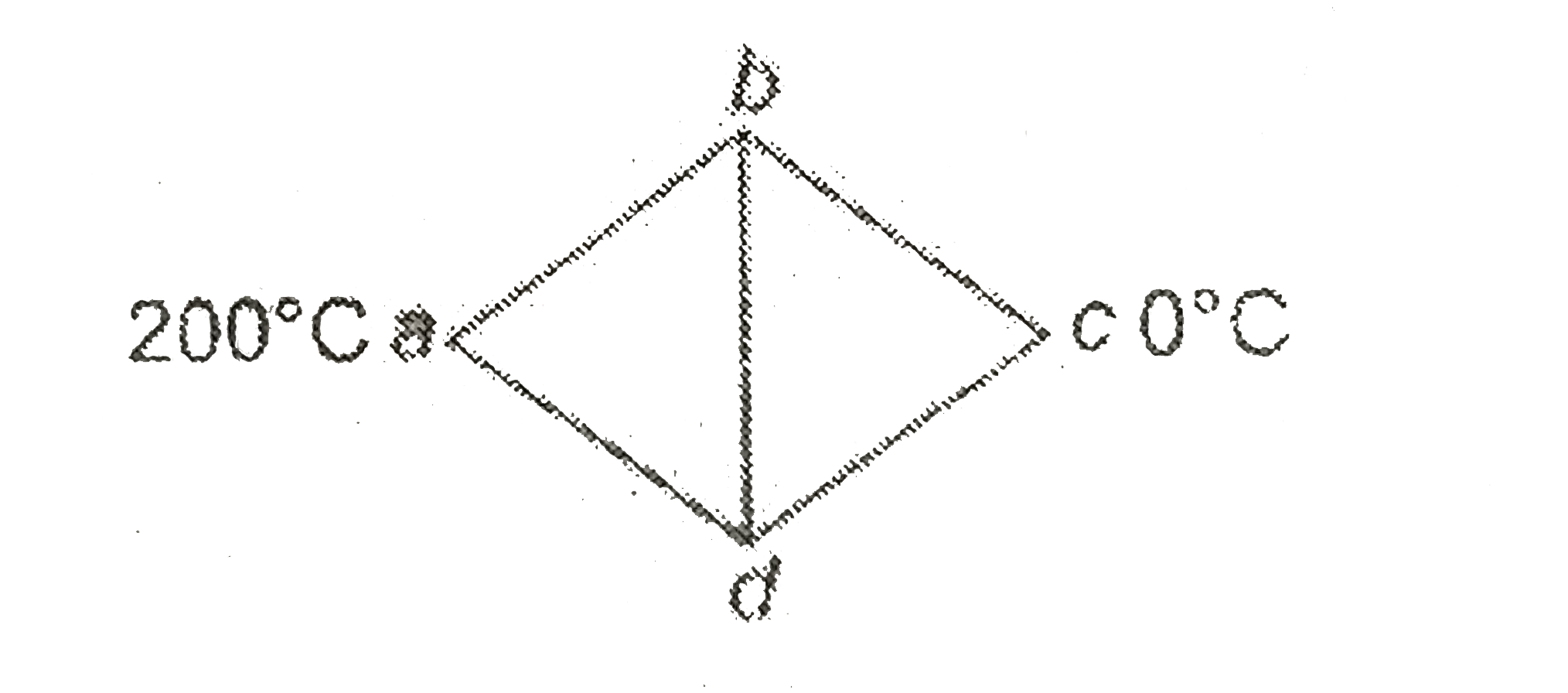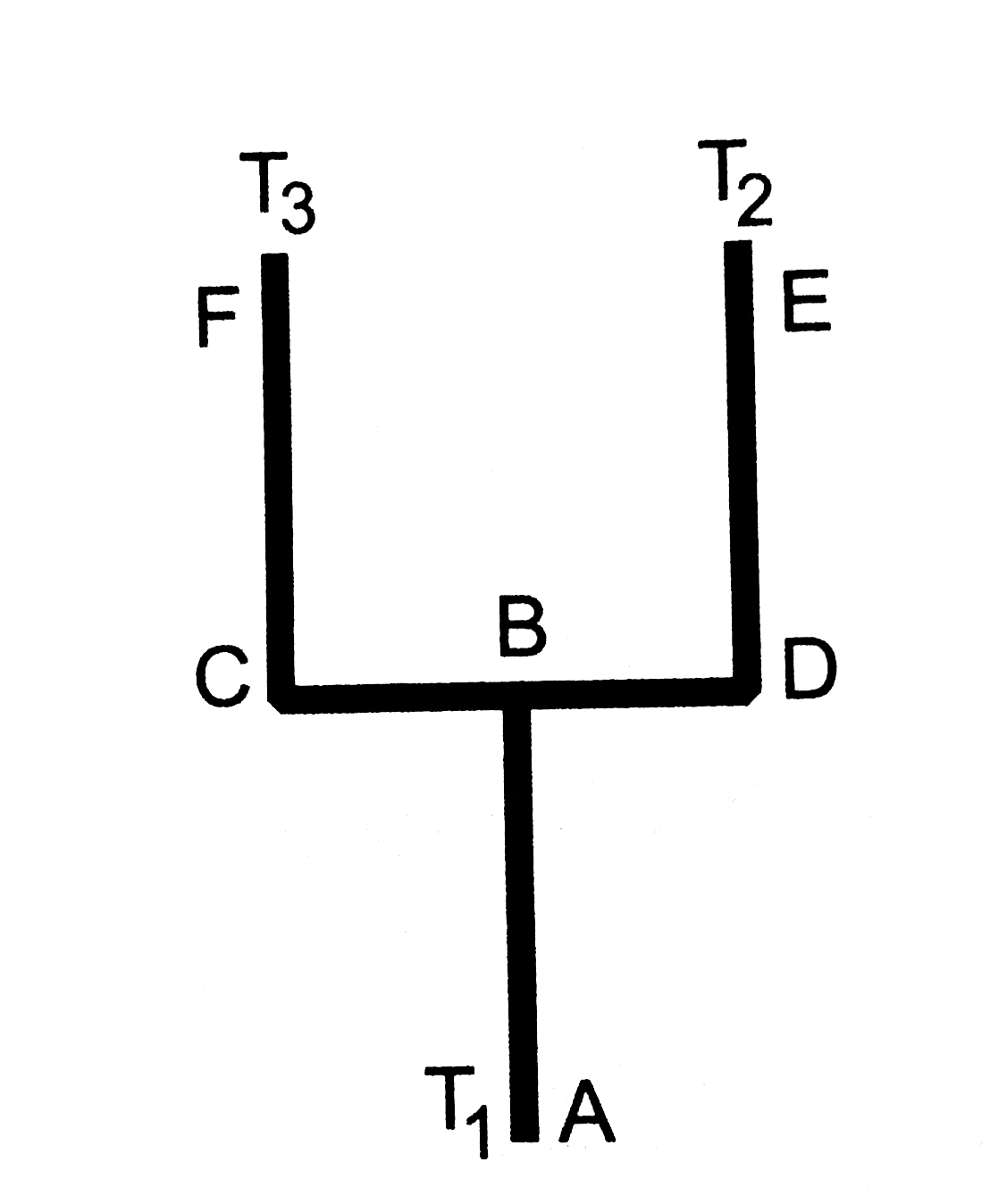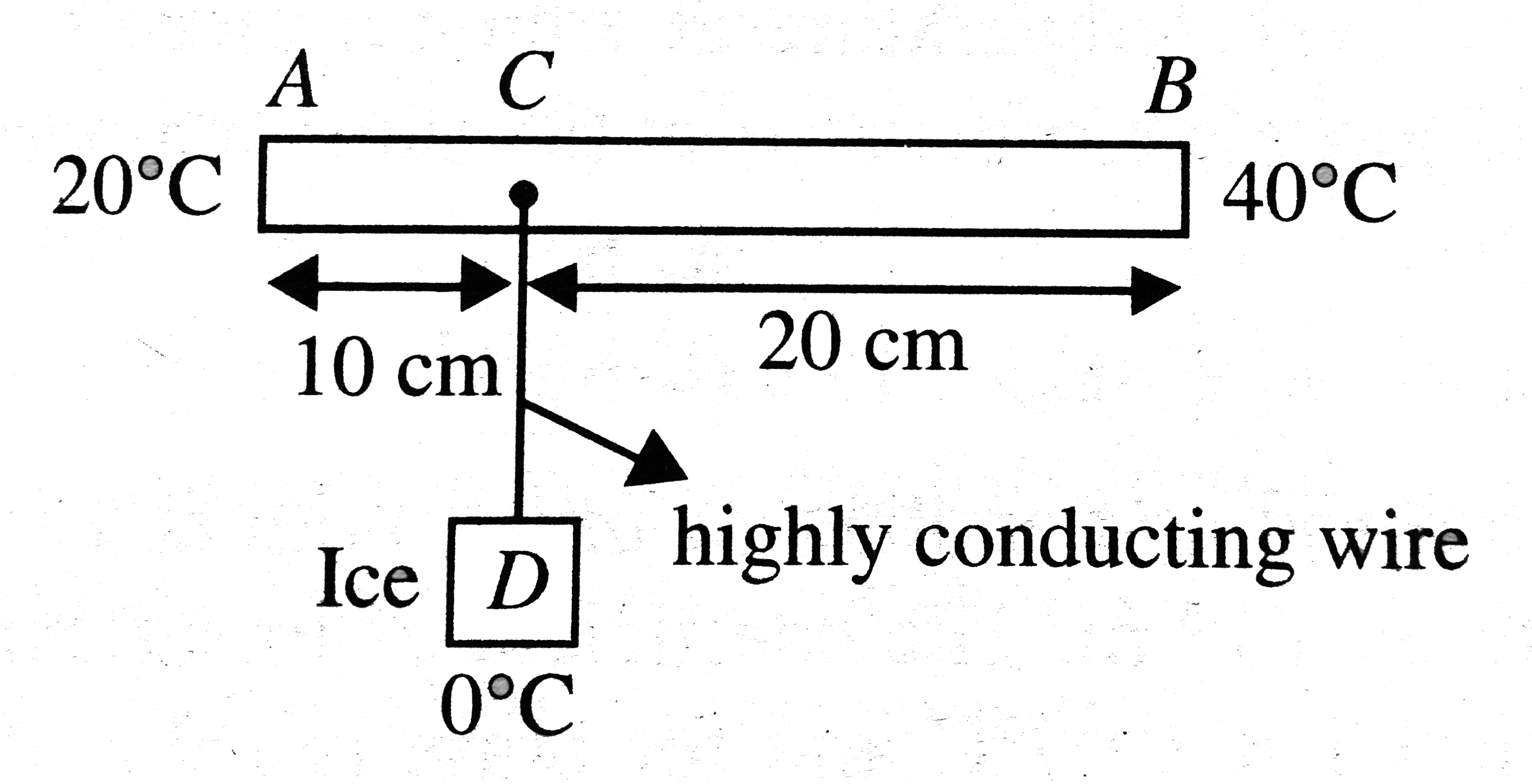Figure show two reservoirs containing two liquids of masses 4m and 2m and their specific heat capacities are S and 2S respectively. Their initial temperatures are 4T0 and T0 respectively. The containers are joined by a conducting K, length l and cross section area A specific heat capacity of the rod is negligible.

The temperature of mid-point 'P' of the rod is always constant.
Heat extracted from container 1= Heat supplied to container 2
After time t0=2mslkaIn2 the temperature difference between containers becomes half of the initial temperature difference.
After time t0=mslkaIn2 the temperature difference between containers becomes half of the initial temperature difference.
The correct Answer is:A, B, C
dQ=(4m)s(−dT1)=(2m)(2s)dT2
On solving we get △Tf=△Tie−KAt2msl
Temperature of point P remains constant
Similar Questions
Three liquids with masses m1,m2,m3 are throughly mixed. If their specific heats are c1,c2,c3 and their temperature T1,T2,T3, respectively, then the temperature of the mixture is
View SolutionAll the rods have same conductance 'K' and same area of cross section 'A'. If ends A and C are maintained at temperature 2T0 and T0 respectively then which of the following is/are correct?
 View Solution
View SolutionTwo liquids A and B have specific heat capacities 2.5Jg−1∘C and 3.2Jg−1∘C respectively.
Which liquid is a good conductor of heat? Why?View SolutionTwo liquids A and B have specific heat capacities 2.5Jg−1∘C and 3.2Jg−1∘C respectively.
Which liquid is more suitable as a liquid in radiators for cooling?View SolutionEqual volumes of three liquids of densities ρ1,ρ2 and ρ3, specific heat capacities c1,c2 and c3 and temperatures t1,t2 and t3, respectively are mixed together. What is the temperature of the mixture? Assume no changes in volume on mixing.
View SolutionFive rods of same material and same cross-section are joined as shown. Lengths of rods ab, ad and bc are l, 2l and 3l respectively. Ends a and c are maintained at temperatures 200∘C and 0∘C respectivelly.

For what length x of rod dc there will be no heat flow through rod bd ?View SolutionFour identical rods AB,CD,CFandDE are joined as shown in figure. The length, cross-sectional area and thermal conductivity of each rod are l,AandK respectively. The ends A,EandF are maintained at temperature T1 , T2 and T3 respectively. Assuming no loss of heat to the atmosphere, find the temperature at B.
 View Solution
View Solution
As shown in Fig. AB is rod of length 30 cm and area of cross section 1.0cm2 and thermal conductivity 336 SI units. The ends A and B are maintained at temperatures 20∘C and 40∘C, respectively .A point C of this rod is connected to a box D, containing ice at 0∘C through a highly conducting wire of negligible heat capacity. The rate at which ice melts in the box is (assume latent heat of fusion for ice Lf=80cal/g)View Solution
As shown in Fig. AB is rod of length 30 cm and area of cross section 1.0cm2 and thermal conductivity 336 SI units. The ends A and B are maintained at temperatures 20∘C and 40∘C, respectively .A point C of this rod is connected to a box D, containing ice at 0∘C through a highly conducting wire of negligible heat capacity. The rate at which ice melts in the box is (assume latent heat of fusion for ice Lf=80cal/g)View SolutionTwo liquids at temperature 60∘C and 20∘C respectively have masses in the ratio 3:4 their specific heat in the ratio 4:5. If the two liquids are mixed, the resultant temperature is.
View Solution
